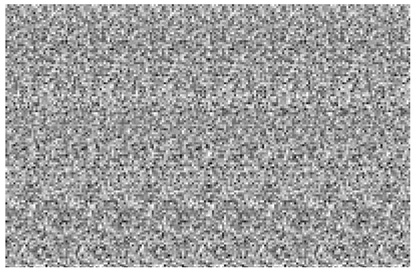Korean J Ophthalmol.
2004 Dec;18(2):154-160. 10.3341/kjo.2004.18.2.154.
A Study on the Clinical Usefullness of Digitalized Random-dot Stereoacuity Test
- Affiliations
-
- 1Department of Ophthalmology, Busan Paik Hospital, In Je University, College of Medicine, Korea.
- 2In Je University Ophthalmology Research Foundation, Korea.
- 3Lee Eye Clinic, Busan, Korea.
- KMID: 754381
- DOI: http://doi.org/10.3341/kjo.2004.18.2.154
Abstract
- Existing methods of stereoacuity testing need specific glasses or optical device for use. We have designed a new stereoacuity test for the digitalized, random-dot stereogram and researched its clinical usefulness. A digitalized, random-dot, stereoacuity test card was created with a computer program that used a preferred symbol and the designed system was tested along with the Randot preschool stereoacuity, Titmus-fly and Lang tests to compare their sensitivity and specificity. The mean success rate of the digitalized, random-dot test was 98.2%, while the rates of the Randot preschool stereoacuity, Titmus-fly and Lang tests were 89.3%, 74.2% and 86.1%, respectively. Sensitivity and specificity of the new test were 100% and 95.3%, respectively, which were not that different from those of the Randot preschool stereoacuity, Titmus-fly and Lang tests. We found that the digitalized, random-dot, stereoacuity test has a high success rate and can be appropriately used in medical examinations and follow-up tests for strabismus patients.
Keyword
MeSH Terms
Figure
Reference
-
1. Tychsen L. William MH, editor. Binocular vision. Adler's Physiology of the Eye. 1992. 9th ed. St. Louis: Mosby;773–853.2. Von Noorden GK. Binocular Vision and Ocular Motility Theory and Management of Strabismus. 2002. 6th ed. St. Louis: Mosby;7–37.3. Yun DH, Lee SW, Choi U. Angwahak. 1991. 2nd ed. Ilchokak;205.4. Parks MM. The monofixational syndrome. Trans Am Ophthalmol Soc. 1969. 67:609.5. Parks MM. Tasman W, editor. Binocular vision. Duane's Clinical Ophthalmology. 1991. Philadelphia: J.B. Lippincott Co;1–14.6. Broadbent H, Westall CA. An evaluation of techniques for measuring stereopsis in infants and young children. Ophthalmic Physiol Opt. 1990. 10:3–7.7. Manny RE, Martinez AT, Fern KD. Testing stereopsis in the preschool child: Is it clinically useful? J Pediatr Ophthalmol Strabismus. 1991. 28:223–231.8. Lee SY, Park WT. Assessment of Stereoacuity with the Frisby and Lang 2 Stereotests in Preschool Children. J Korean Ophthalmol Soc. 1998. 39:257–264.9. Saunders KJ, Woodhouse JM, Westall CA. The modified Frisby stereotest. J Pediatr Ophthalmol Strabismus. 1996. 33:323–327.10. Frisby JH, Davis H, McMorrow K. An improved training procedure as a precursor to testing young children with the Frisby stereotest. Eye. 1996. 10:286–290.11. Lang J. A new stereotest. J Pediatr Ophthalmol Strabismus. 1983. 20:72–74.12. Simons K. A comparison of the Frisby, Random-Dot E, TNO, and Randot circles stereotests in screening and office use. Arch Ophthalmol. 1981. 99:446–452.13. Schanel-Klitsch E, Ciner EB, Scheiman M. Stereopsis assessment in normal 1.5 to 3 year old children: A comparison of three random dot tests: Operant preferential looking; Random dot E; and the Lang stereotest I. Binocular Vis Strabismus Q. 1996. 11:125–130.14. Birch EE, Gwiazda J, Held R. Stereoacuity development for crossed and uncrossed disparities in human infants. Vision Res. 1982. 22:507–513.15. Birch B, Williams C, Hunter J, Sapa MC. Random dot stereoacuity of preschool children. J Pediatr Ophthalmol Strabismus. 1997. 34:217–222.16. Tyler CW. Schor CM, Cuiffreda KJ, editors. Sensory processing of binocular disparity. Vergence Eye Movement: Basic and Clinical Aspects. 1983. Boston : Mass: Butterworths;199–295.17. Lee BH, Kim MM. Comparisons of the Lang, Randot, TNO and new stereo tests in screening and office use in children. J Korean Ophthalmol Soc. 1990. 31:651–660.18. Arthur GB, Ronald BR. Clinical Visual Optics. 1989. 2nd ed. Butterworths;229–232.19. Lee SY, Bae SH. Comparison of various kinds of stereoacuity tests in preschool children. J Korean Ophthalmol Soc. 2000. 41:1983–1988.20. Von Noorden GK. Binocular Vision and Ocular Motility. Theory and Management of Strabismus. 2002. 6th ed. St. Louis: Mosloy;21–25.21. Parks MM. Arruga A, editor. Stereoacuity as an indicator of bifixation. International Strabismus Symposium. 1968. 1996; University of Giessen, Germany. Basel Switzerland: Karger;258.22. Ing MR. Early surgical alignment for congenital esotropia. Ophthalmology. 1983. 90:132.23. Peter OB. Robert AM, William MH, editors. Binocular vision. Adler's physiology of eye; Clinical application. 1987. 8th ed. St. Louis: Mosby;619–689.24. Julesz B. Binocular depth perception of computergenerated patterns. Bell Syst Tech J. 1960. 39:1125.25. Bennett AG. Ophthalmic test types. Brit J Physiol Optic. 1965. 22:238–271.
- Full Text Links
- Actions
-
Cited
- CITED
-
- Close
- Share
- Similar articles
-
- Comparison of Distance and Near Stereoacuity in Normal and Intermittent Exotropic Children
- The Stereoacuity on Child Strabismus 1. Aflalysis of Horizontal Deviations
- Evaluation of Factors Influencing Stereoacuity in Exodeviation
- Change of Postoperative Distance Stereoacuity in Intermittent Exotropic Patients
- Effect of Induced Anisometropia on Stereoacuity by Far and Near Distance Random Dot Stereo Test


